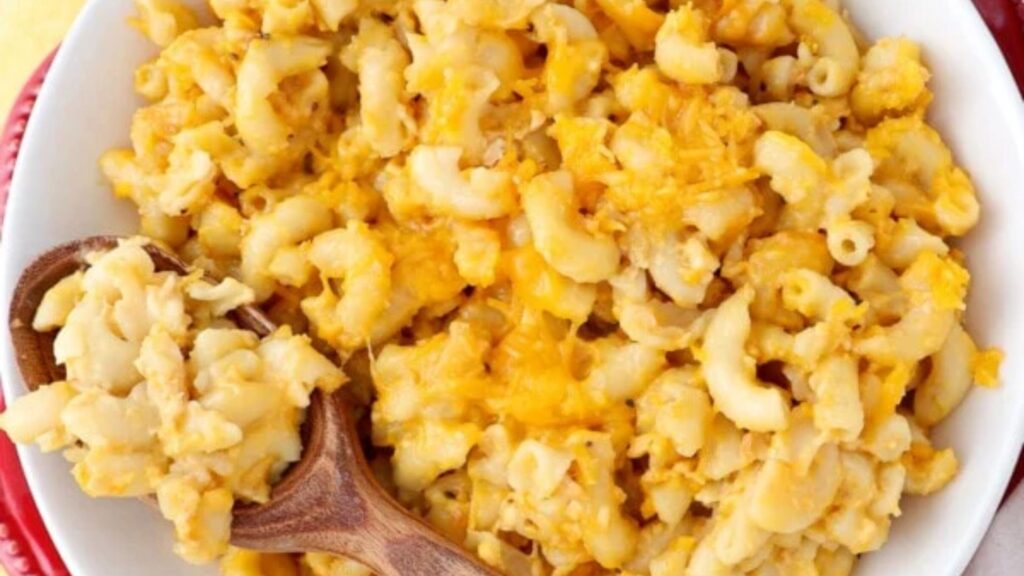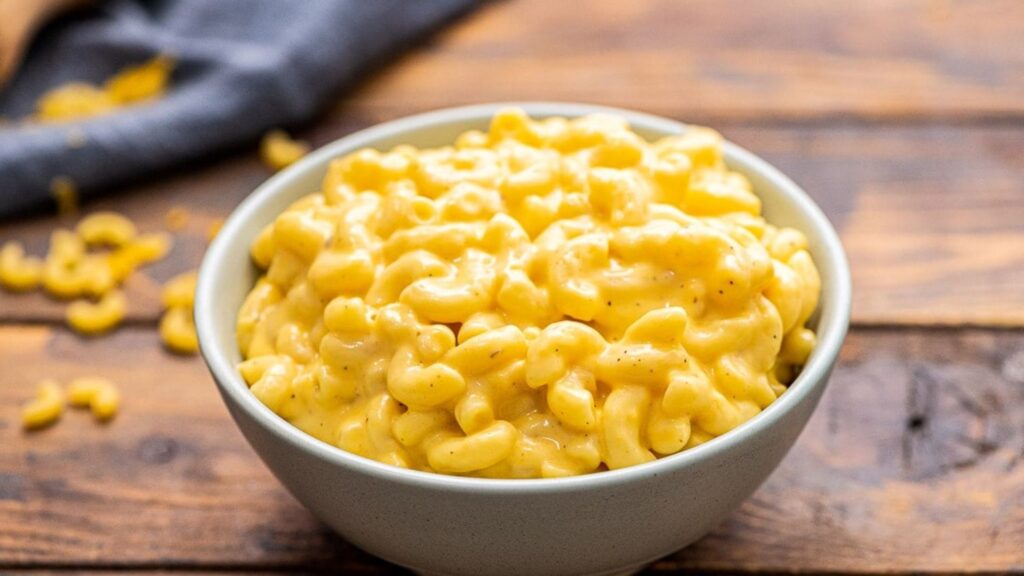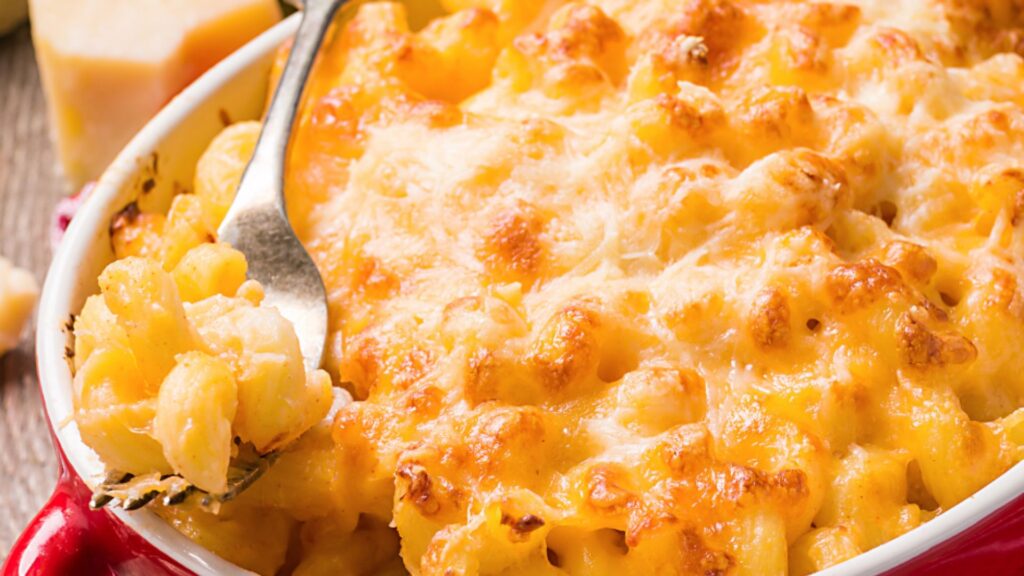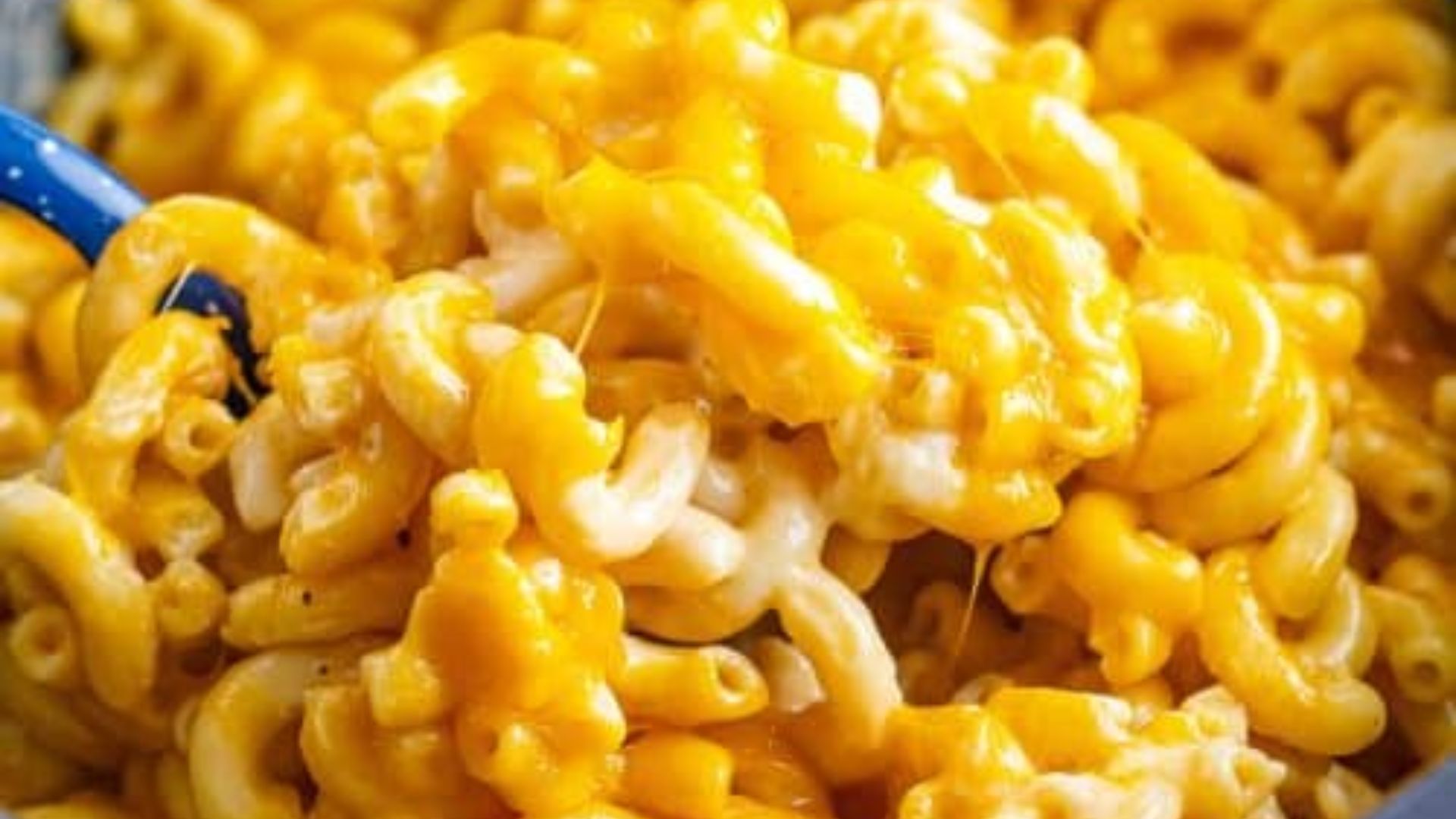That is the feeling, which we all know. That unignorable desire to have a big satisfying bowl of mac and cheese. But when you are minding your salt the traditional one can be completely out of bounds. Packed with salty cheeses and often extra salt added, it’s a sodium bomb. This is the great news: low sodium mac and cheese is not only feasible but can be absolutely good. Seriously! You can by all means enjoy that creamy, cheesy hug in a bowl with zero guilt when it comes to salt. Whether you’re trying for your heart health, regulating blood pressure, or simply wanting to choose better, you’re going to find out that making a delicious low salt macaroni and cheese is a whole lot easier than you’d think. Forget overly processed, bland, boring replacements. We’re talking about the rich flavor and that perfect velvety texture you love.

Why Go Low Salt with Your Mac and Cheese?
The low salt macaroni and cheese is no longer meant only to be chosen by people with strict instructions by a doctor. Admit it, we all consume far too much sodium than what we know. It slips into our diets in the form of processed foods, restaurant meals and of course yummy comfort food like mac and cheese. Overloading on salt regularly may cause a bloated feeling, raise blood pressure long term and stress the heart and kidneys even more. A really effective thing to do is drastically reduce the amount of sodium you eat by swapping your regular mac and cheese with low sodium mac and cheese. It makes you a control freak of what you eat.
The Sodium Problem in Regular Mac and Cheese
Regular mac and cheese is a salt mine so why is this? Let’s divide it. The biggest culprits are the cheeses themselves. Cheddar, American, Parmesan, they are naturally really salty since salt is a preservative, and intensifier of the flavors. In case you purchase pre-shredded cheese, most probability is that you will receive one that added even more sodium to prevent clumping. Then there is the butter (salted of course), the cooking water of the pasta which was salted as it cooked, and any crunchy toppings, such as seasoned breadcrumbs. Many recipes also tell you to sprinkle extra salt right into the cheese sauce. But the absolute worst offenders? Boxed mac and cheese mixes or canned cheese sauces.
Making Low Sodium Mac and Cheese Taste Amazing The Secrets
Regular mac and cheese is a salt mine so why is this? Let’s divide it.Don’t just remove the salt shaker – actively replace its job with other yummy sensations. Focus hard on building a deep, savory base. Have sauteed onions or garlic, perhaps a mushroom or two that you finely chop, or a tablespoon of tomato paste to enrich it. A touch of acidity is magic also! Adding a bit of fresh lemon juice or a small dollop of vinegar (white wine or apple cider) at the very end can make all the other flavors seem to pop louder, as does salt normally. Naturally, that creaminess cannot be negotiated to get proper satisfaction, and so you should perfect the making of a smooth, velvety sauce with a dairy containing lower salt. Last but certainly not least, do not ignore texture! A sprinkle on top of a crunch factor, in the form of whole-wheat breadcrumbs or even toast nuts, can put anything more intriguing in each bite without requiring additional salts.
Finding Cheeses That Work for Low Sodium Mac
Picking the right cheeses is super important for your low sodium mac and cheese success. The good news? Not all cheeses are equally salty! Some naturally have less sodium. Any type of Swiss cheese, Emmental, fresh goat cheese (chvre), fresh mozzarella (the variety that comes in water), and ricotta are usually superior to using cheddar, Parmesan, feta or blue. This is imperative: never forget the nutrition label! The amount of sodium may change significantly even among brands of the same type of cheese. They may not be as easy to locate, but make sure to watch out packages that have specific labelling that says: low sodium or even what sodium they used. Reduced sodium.” Buying a block of cheese and shredding it yourself is almost always better than pre-shredded, which usually has added sodium.

Flavor Power-Ups for Your Low Salt Mac
Bland low salt macaroni and cheese? No way! In your kitchen there are cool flavourful boosters with no salt. Quantities of flavorful, savory and ultra-umami ingredients are your supermates in this task. Experiment with nutritional yeast. It is cheesy and nutty tasting. A little spoonful of white miso paste adds incredible depth (just check its sodium and use sparingly). Chopped really finely sautéed mushrooms stirred in the sauce do wonders. Garlic powder and onion powder (don’t worry they have no salt!) make excellent flavor foundation. Warmness and a hint of smokiness are added by the addition of smoked paprika. Mustard powder, or a teaspoon of dijon, is a magic bullet — it cuts thru the richness, and makes the cheese intensity seem greater. Stirring in fresh herbs right before serving – like chives, parsley, or thyme – brings a burst of freshness.
Picking and Cooking Pasta for Low Sodium Success
Even the pasta itself matters in your low sodium mac and cheese mission. Start with plain dried pasta – elbows, shells, whatever shape you love. Choose semolina or whole wheat, and avoid any flavored or “quick-cook” kinds, as they often have salt added. Here’s a big one: don’t add salt to your pasta water! This is a major source of unnecessary sodium in regular recipes. Just cook the pasta in plain water until it’s al dente – that means it still has a little bite to it, because it will cook more in the hot cheese sauce. Before you drain it, save about a cup of that starchy pasta water. This stuff is liquid gold! It helps your cheese sauce to thicken nicely and it gets so smooth and creamy without any added salt or butter.
Mastering the Creamy Low Sodium Cheese Sauce
The sauce is considered the heart and soul of any great mac and cheese and your low salt one should use a tad bit of extra TLC. Begin by preparing an easy roux: In your pot, melt some unsalted butter, then set aside and add to this an equivalent amount of all-purpose flour (or your preferred gluten-free mix). This only needs to be cooked a minute or so in order to remove the raw flour taste. Next gradually sneak in low-sodium warm milk (whole or 2 percent will yield creamiest) or unsalted broth. Go slow and keep whisking! This creates a smooth, thick base called a béchamel. Patience is key here – whisk constantly to avoid lumps. Let this base cook and thicken nicely. Now, take the pot off the heat.
Getting Kids to Love Low Salt Mac and Cheese
Need the children to get in on low salt macaroni and cheese? Easily possible with some trickery. Make it look fun and familiar! Pureed butternut squash, carrots or sweet potato, to stir in is genius. It provides usually undetectable vegetables and natural sweetness and it provides that familiar orange color that children have come to expect with mac and cheese. A bit of peas or very finely diced/minced broccoli are a good little burst of color and nutrition, minus the excessive flavor. Use fun pasta shapes! Kids are eaters with their eyes. As in elbows, shells, wheels, dinosaurs, etc. Steer toward simplistic creamy cheeses such as fresh mozzarella or low sodium Swiss; this will generally go over with kids. Use something slightly saltier to wean them off saltier things; salt is not a good one to go cold turkey on.
Low Sodium Mac for Everyone
Dietary restrictions shouldn’t stop anyone from enjoying delicious low sodium mac and cheese. Need it gluten-free? No problem! Take your favorite GF pasta (rice, corn or quinoa mixes are good), and a GF flour mix to make the roux. Just check again that your broth, miso and mustard are gluten free as well. Desire low salt dairy free or vegan mac and cheese? You can do it! Use plant-based cheeses (read those sodium labels carefully, as some are high), lean on nutritional yeast for cheesiness, blend soaked cashews or steamed cauliflower for creaminess, and use unsweetened plant milk (oat or soy are good).

Keeping and Reheating Your Low Salt Masterpiece
Made a big batch? Great! Low sodium mac and cheese stores really well for easy meals later on. Wait till it cools down and then put it in an airtight container into the fridge. It is supposed to last 3-4 days fresh and tasty. The trick is to reheat it correctly in order to preserve that creamy consistency. It is most likely stovetop: location the mac and cheese in a pan on the bottom. Add only a very small dash of low sodium milk or unsalted broth or even water. Keep stirring it carefully, and frequently till it is thoroughly warmed. On top of that microwave can be used when you are pressed for time. Put some of it in a microwave-safe dish, loosely cover with plastic wrap (or use a paper towel) and microwave on medium strength. Do 1-minute bursts, mixing up very well in between.
Low Sodium Mac & Cheese
| Feature | Traditional Mac & Cheese | Low Sodium Mac & Cheese | Why It Rocks |
| Sodium Level | Sky-high (500-1000mg+ per serving) | Smartly reduced (under 300mg per serving) | Protects heart health without sacrificing comfort |
| Cheese Pick | Relies on salty cheddar/Parm | Smart swaps: Swiss, mozzarella + flavor boosts | All the meltiness, none of the salt overload |
| Flavor Secret | Heavy salt + processed cheese | Umami magic: garlic, herbs, mustard, spices | Richer, deeper flavor – no blandness here! |
| Pasta Prep | Cooked in salted water | Plain water + starchy reserve water used | Cuts hidden sodium, makes sauce creamier naturally |
| Kid Appeal | Often artificial color/flavor | Veggie-packed purees + fun shapes | Sneaky nutrition they’ll actually eat! |
| Health Win | Contributes to bloating, high BP | Guilt-free comfort food | Satisfies cravings while supporting your wellness goals ✅ |

Go Forth and Make Cheesy Magic!
The idea of being able to release additional salt does not imply sacrifice and deprivation of the blissful, warm, and cheesy feeling of mac and cheese. As one can see, it is indeed possible to create the amazing low sodium mac and cheese, and among other things, it is not very challenging either. Adding big flavors with other savory ingredients, herbs, spices and aromatic fixings, making clever choices with your cheeses and perfecting that creamy, sodium-free sauce, you can unlock a whole new world of satisfying comfort food that you can feel… good… about. This low salt macaroni and cheese does not taste like an alternate version of a less craved food group; it is a treat. It demonstrates that you can still eat mindfully but with a lot of taste and be very comforting.
FAQs
1. Can low sodium mac and cheese actually taste good?
Absolutely! The secret is layering of flavors, without salt tasting. Reach for flavor by way of ingredients that are more savory, think garlic, onions, mushrooms, herbs, spices (maybe smoked paprika or mustard powder), and a squeeze of something acidic – lemon, vinegar.
2. Which cheeses are best for low sodium mac and cheese?
Try to use naturally lower-sodium cheeses such as Swiss, Emmental, fresh mozzarella in water, goat cheese (chevre) or ricotta. Never ever go shopping without looking at the labels! Use partially of a stronger cheese than one in quantity.
3. Do I really need to skip salting the pasta water?
Yes! Salting the pasta water is a major hidden sodium source. Cook your pasta in plain water instead. Spare some of the starchy cooking liquid from the dry before draining — it helps the cheese sauce to become creamy without sacrificing an extra amount of saltor-fat.
4. How can I get my kids to eat low salt mac and cheese?
Make it fun and familiar! Add in colorful pasta shapes, mix in pureed veggies like butternut squash or carrots for the classic orange color and extra nutrients, and throw in some peas or teeny broccoli bits, and finish off with a crispy whole-wheat bread crumb crunch.
5. Can I make low sodium mac and cheese if I’m gluten-free or dairy-free?
Definitely! Use gluten free pasta and gluten free flour when making sauce. For dairy-free opt for low-sodium plant based cheeses very carefully (read labels!), use nutritional yeast for cheesy flavor.
